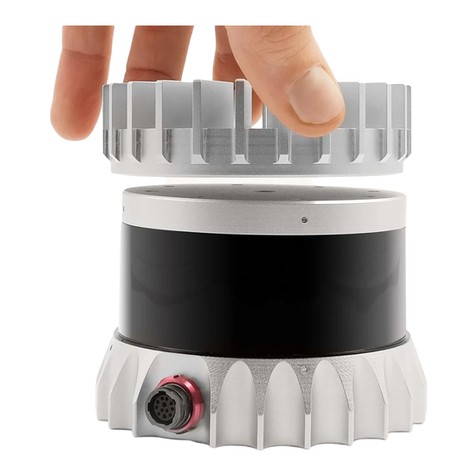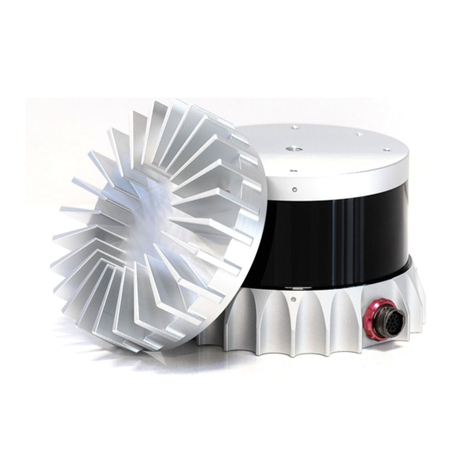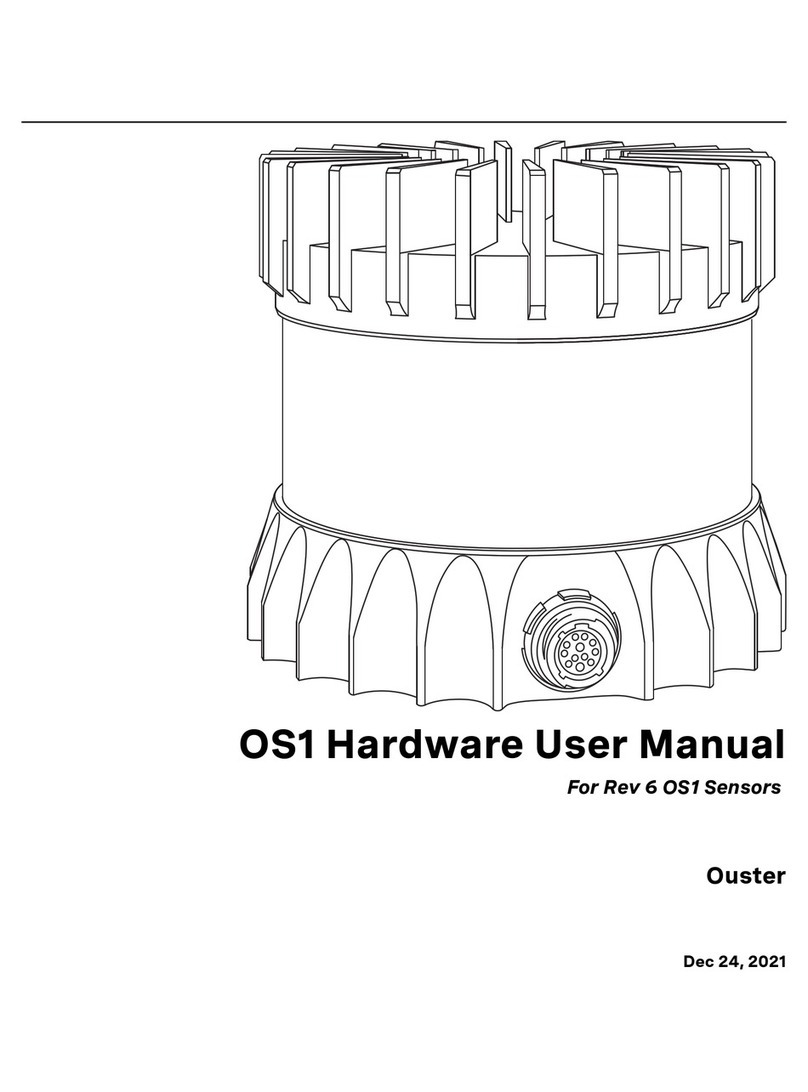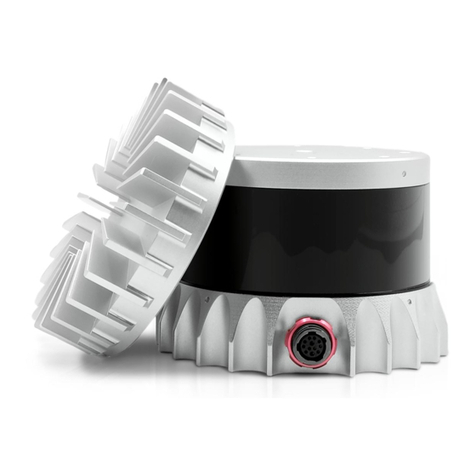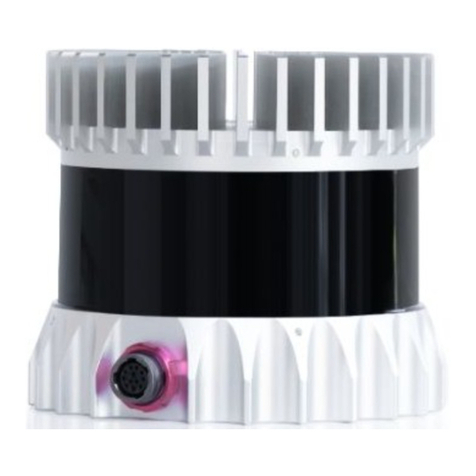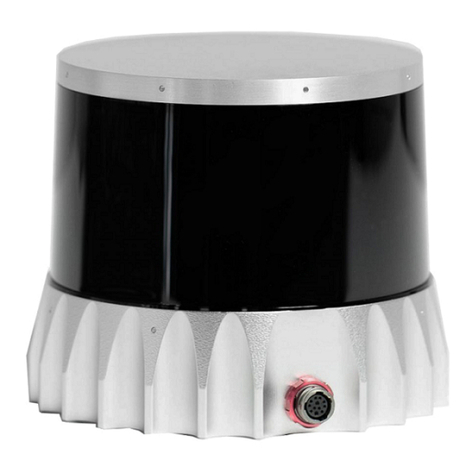
Lorsd’une utilisation àtempératureambiantesupérieure à 40°C, lasurfacemétalliquedu cap-
teur peut présenter des risques de brûlurespour la peau. Dans ces conditions, il est important
d’éviter tout contact avec la partie supérieure, la base ou le dissipateur thermique du capteur.
Le capteur ne doit pas être utilisé à une température ambiante supérieure à 60˚C. 60˚C est la
températuremaximalecertifiéed’opérationsûreducapteur.
Equipment Label: Includes model and serial number and a notice that states the unit is a Class 1
LaserProduct,isaffixedonthebaseextension. Itisonlyvisibleaftertheattachedmountwithwhich
theSensorisshipped,isremoved. ForlocationdetailspleaserefertofigureSensorComponents(Me-
chanical Drawings) intheMechanicalInterfaceSection.
L’étiquettedel’équipement,comprenantlemodèle,lenumérodesérie,etlaclassificationduproduit
laser (ici, classe 1), est apposée au-dessous de la base du boîtier du capteur. Il n’est visible qu’après
avoirretirélediffuseur dechaleuraveclequellecapteurest expédié. L’emplacementest décrit avec
précisiondanslasectionSensor Components (Mechanical Drawings).
Electromagnetic Compatibility: The Rev7 OS0 is an FCC 47 CfR 15 Subpart B device. This device
complies with part 15 of the FCC Rules. Operation is subject to the following conditions: (1) This
devicemaynotcauseharmfulinterference,and(2)thisdevicemustacceptanyinterferencereceived,
includinginterferencethatmaycauseundesiredoperation.
“Ouster”and“Rev7OS0”arebothregisteredtrademarksofOuster,Inc. Theymaynotbeusedwithout
expresspermissionfromOuster,Inc.
Ifyouhaveanyquestionsabouttheabovepoints,contactusatOusterLegal.
1.2 ProperAssembly,MaintenanceandSafeUse
TheRev7OS0canbeeasilysetupbyfollowingtheinstructionsoutlinedinMounting Guidelines. Any
mountingorientationisacceptable. Eachsensorisshippedwithanattachedmountthatcanbeused
fortestornormalusewithinthespecifiedoperatingconditions. Thesensormayalsobeaffixedtoany
otheruserspecificmountofappropriatethermalcapacity. PleasecontactOusterforassistancewith
approvingtheuseofuserspecificmountingarrangements.
Any attempt to utilize the sensor outside the environmental parameters delineated in the Rev7 OS0
datasheetmayresultinvoidingofthewarranty.
When power is applied, the sensor powers up and commences boot-up with the laser disabled. The
boot-upsequenceisapproximately60sinduration,afterwhichtheinternalsensoropticssubassem-
blycommencesspinning,thelaserisactivated,andtheunitoperatesinthedefault1024x10Hzmode.
Whenthesensorisrunning,andthelaserisoperating,afaintredflickeringlightmaybeseenbehind
theopticalwindow.
Note that the Rev7 OS0 utilizes an 865nm infrared laser that is only dimly discernible to the naked
eye. The sensor is fully Class 1 eye safe, though Ouster strongly recommends against peering into
theoptical windowat closerangewhile the sensoris operating. Oustersensorsareequipped witha
multi-layerseriesofinternalsafetyinterlockstoensurecompliancetoClass1LaserEyeSafelimits.
The Rev7 OS0 is a hermetically sealed unit, and is not user-serviceable. Any attempt to unseal the
enclosurehasthepotentialtoexposetheoperatortohazardouslaserradiation.
6
